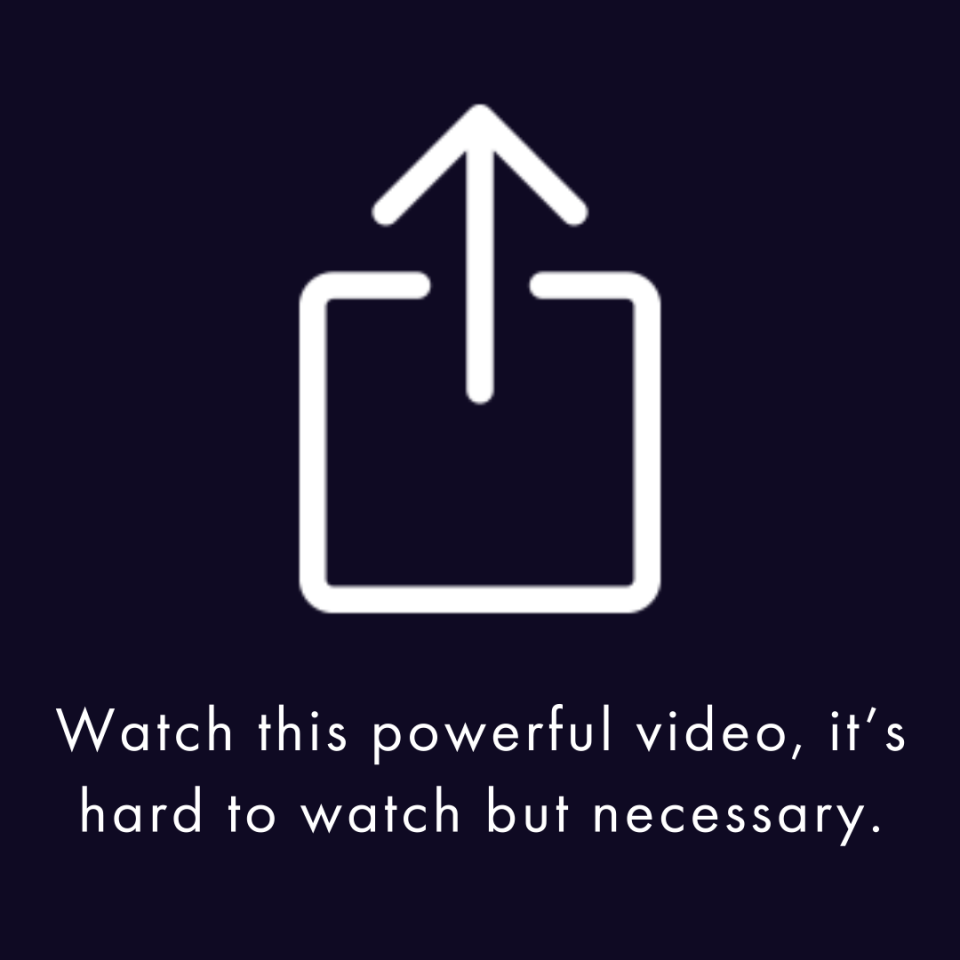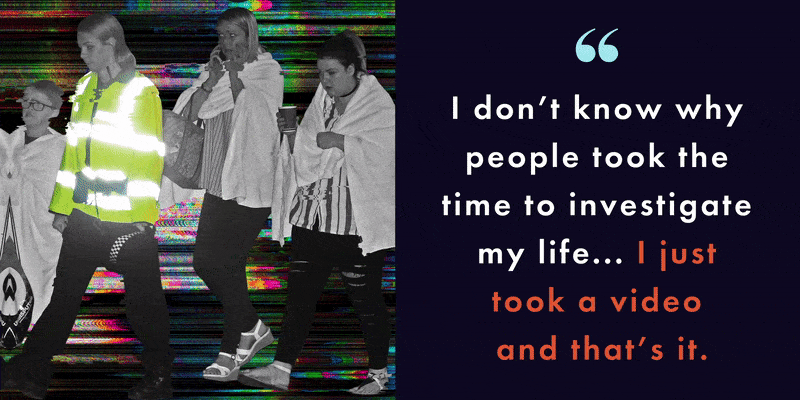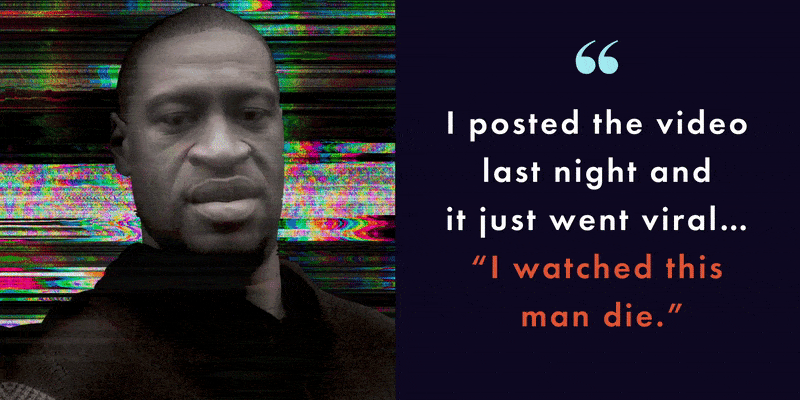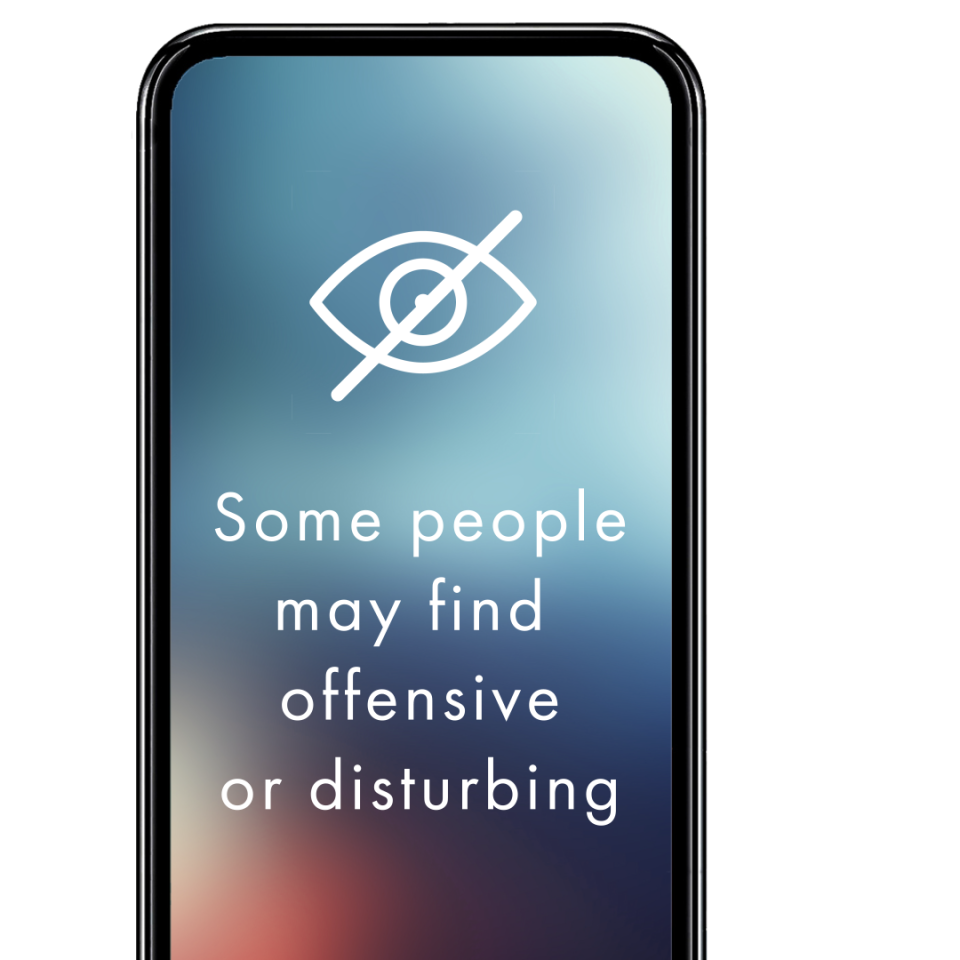When trauma goes viral: What does our obsession with distressing videos say about us?

Anna* rushes through a London airport, luggage in tow. She checks her phone as she walks – she’s dangerously close to missing her flight to Barcelona, a little September holiday to recover from a chaotic start to the academic year. As she breezes through security, she is stopped by an airport official who accuses her of refusing to have her bag searched. Confused, Anna asserts that she did have it searched, and carries on – only now, the official is following her all the way to the boarding gate, telling other airport staff that she’s not allowed to get on the flight because of a breach of security, before calling the police.
A petrified, petite Black woman, Anna knows all too well what can happen during interactions with police, so she tries to leave the airport via the way she came. But by now, four armed policemen and several airport security guards are hot on her trail. Anna moves towards a cubicle in the women’s toilets to get some headspace and think about what she’s going to do next, only to have the men enter the toilet, take the door off its hinges and drag her out.
What happens next is a terrifying blur. Her head is smashed on the floor, someone stands on her ankle, there’s a knee in her back and the weight of the policeman it belongs to squeezes the air out of her lungs. Her hands are forcefully handcuffed behind her. She is suffocating and hyperventilating; she can’t breathe. Taken to a nearby police station, Anna’s held for seven hours before being released just after 3pm on the following Friday morning.

Fast-forward two years. Anna now walks with a limp and can’t run or play tennis like she used to. Her left wrist still painfully twinges, and she’s scared to pick up certain objects, like kettles, for fear she might drop them on herself. She has been diagnosed with severe post- traumatic stress disorder and clinical depression as a direct result of that night. Whenever police are on her road, she barricades her door with dumbbells and whatever else she has to hand. But even then, she doesn’t feel safe, because the moment she opens her laptop, she could be transported right back to that moment, a knee digging into her back.
You’ll have seen them. Whenever there’s a major news story, our social media feeds are flooded. From footage of terrorist attacks and videos of police and state violence to pictures of drowned migrants attempting to reach refuge, these clips and images are fuelled by our 24/7 news cycle. And they’re often shared as such – quickly retweeted, often accompanied by a caption stating how horrific and awful the content is.
The consumption of – and fascination with – distressing images and videos that showcase someone’s suffering is referred to as trauma voyeurism (or sometimes, contentiously, as “trauma porn”), and has become almost commonplace. Moreover, there’s a view that sharing such material can raise awareness, demonstrate allyship and help force change. But as the widespread sharing of George Floyd’s murder last year showed, this sort of content can also traumatise not just individuals but entire communities. I set out to discover more – and find out whether there’s ever any need to retweet.
Behind the camera
On 25 May last year, Darnella Frazier was walking her cousin to the local shop near her house, when she came across George Floyd, pinned to the ground by the police. She stopped and filmed the full 10 minutes leading up to his death before posting it on her Facebook. “I posted the video last night and it just went viral,” Darnella says in a video posted online by news platform Now This when she revisited the scene of the crime the day after George Floyd’s death.“I watched this man die,” she says through tears. “Everybody’s asking me, how do I feel? I don’t know how to feel, ’cause it’s so sad, bro. This man was literally right here at 8pm yesterday. I was walking my cousin to the store, and I just see him on the ground and I’m like ‘What is going on?’”

The pain and trauma Darnella experienced watching a Black man die before her eyes were further compounded by the online harassment she suffered afterwards. After the 17-year-old shared the video, she was subjected to trolling, including questions about why she didn’t physically intervene – as though she didn’t have clear indications as to why interference on her part might not end well.
The possibility of a traumatic video spiralling dramatically out of the poster’s hands is something that Twitter user Zach Bruce found himself contending with after he posted a video from the Manchester Arena bombing in 2017 that left 23 dead. The footage shows people running through Victoria station, panicked, as sirens go off in the background. Amassing over 2.2 million views on Twitter to date, it was quickly picked up by reporters and featured in national and international coverage of the attack.
“I was walking down the steps [of the station] and all of a sudden, I heard a massive bang,” he tells me. “I thought it was the end of the show, obviously it wasn’t – I felt a bit stupid afterwards for thinking that. It’s something that I’d never experienced before. It was only when I got back to my hotel and my sister told me what had happened that I put it together. That’s when I posted it online. I was constantly on my phone all night because everyone wanted my account of the whole situation.” Zach was then invited to be interviewed for American broadcasting network CBS, an interview that he describes as “really, really bad” because he “sounded awful” and he hasn’t watched it back since. What was lost in the coverage of the event was that Zach hadn’t attended the concert and, as a result, people began theorising that he’d had something to do with the bombing or was simply lying.“They were saying,‘Why was he the one to take the video?’ and began looking through my whole life and my social media. I don’t know why people took the time to investigate my life... I just took a video and that’s it.” I ask him if he regrets filming the video, considering the backlash it brought. “No,” he says firmly. To Zach’s mind, it was important to circulate it.

Shock views
Whenever Sofia Akel opens up her computer, there’s a high chance that there’ll be a traumatic video waiting for her. She works as a race equity specialist and as the founder of Free Books Campaign (which aims to donate books by authors of colour to those who can’t afford them), and strangers often reach out to her to share their stories. “Because of how public I am on my social media and because people know the work I do, I think it creates a sense of familiarity,” Sofia explains. “It’s human for people to want to connect with someone that they might not be able to in their workplace or maybe even in their friendship or family circles, but what that means is that sometimes I get unsolicited content. Videos of Black people getting killed by police, people attacked on the streets, all kinds of verbal assaults and more,” she tells me, adding that recently her depression and anxiety have “sky-rocketed”.
“I don’t understand why anyone wants to watch [these videos],” explains Anna, who, since her own attack, cannot watch viral videos that show any form of brutality or trauma, especially when they are fatal. They needlessly remind her of something she knows with some certainty – it could have been her.“I live by myself, so social media has been a real lifeline for me in terms of being able to interact with people safely during the pandemic,” she says.
“I had to take loads of time off after the incident, and it was just the stuff of nightmares, literally. I’d wake up in a cold sweat, and seeing these videos really triggers that for me.” Sofia explains that she tries not to open the videos people send her,“because you never know what’s going to be in them”.

It’s a rule I also employ myself – but, like Sofia, I sometimes find that choice is taken away from me. When Philando Castile was killed in 2016, it was all captured on a Facebook live stream by his partner, Diamond Reynolds. I set about avoiding the video as best I could, especially as I had a full day in an office ahead of me. I didn’t need to watch it to prove to myself it happened. That same day, a white woman I was loosely involved with romantically tagged me in a comment, and, without thinking, I opened the notification. It was the Philando Castile video. Sat at my desk, I quickly closed the window, my body cold all over, bile inching its way up my throat. Video aside, I was floored by the casual violence of this white woman – in attempting to posture solidarity, she was willing to traumatise me, as if I wasn’t keenly and painfully aware of the little value placed on Black life. Unsurprisingly, my contact with her soon tailed off.

So what exactly happened to cause my body to react that way? “These videos are a reminder of your own micro-experience of racism,” explains Nathaniel Oke, a psychotherapist, trauma specialist and founder of the Talking Therapy Clinic.“They represent everything that you have experienced and the way that you may have been treated [as] less than human. It’s a collective racial trauma – we are all experiencing it as if it is happening to us, as if it could happen to us because we are in that bracket.”
Wellbeing consultant Lee Chambers adds that seeing these videos can bring a person back to a place they previously were, often manifesting in various tangible and distressing forms.“Semantic or physical reactions to these videos can almost be instantaneous,” he explains. “People can be physically sick or even not be able to sleep as a result. Watching these spikes our cortisol levels and triggers our lymphatic nervous system, and then we are in fight- or-flight mode. That can happen [from watching] literally just one video.”
Seeking justice
Given that circulating these videos risks further trauma – not only for the person filming it and the friends and family of the victim, but also for the wider community viewing it – it begs the question: is there any value to them in the first place? Are these recordings necessary in order for others to fully understand the scope of the violence and start some kind of change, or do they do more harm than good?
On 23 February 2020, Ahmaud Arbery was jogging in Brunswick, Georgia, when three white men – William Bryan and father and son Gregory and Travis McMichael – pursued him in a pickup truck before fatally shooting him. Calling for arrests to be made, the Arbery family retained three lawyers, including Lee Merritt, who tells me that as soon as his team were made aware that there was a video of the killing, they set out to find it.“As we started to investigate, we knew that the video was out there and that we would receive it shortly, because once a video is in the internet space, it’s going to become available,” he says. It was in their hands one week later.
The Arbery family and Merritt then had to decide whether or not they would share the video on social media, considering the inevitable and very public pain it would cause the family versus the potentially huge interest it would stir. The lawyer adds: “We had to weigh [the pain] against the benefit – we were somewhere around 70 days [since Ahmaud’s murder] and there had been no arrests made. The release of the video, because we knew it was so jarring, would likely spur those arrests and accountability.”

After the family took the decision to release the video publicly, Merritt set about readying them as best he could.“Wanda [Ahmaud’s mother] made it a point to get off all social media, and she remains off it – she only saw the video in court,” he explains. “His dad wanted to see the video right away – everyone was relieved when they saw it, knowing that Ahmaud had not, in fact, committed any crimes. We started to prepare them for the backlash that we knew would come from releasing such incriminating information about white men in Georgia – they would then attempt to incriminate Ahmaud.”
The video was shared on 5 May, and went viral as expected, with reposts on social-media platforms like Twitter and YouTube – two days later, the McMichaels were arrested, with Bryan’s arrest following on 21 May.
There are still palpable racial dynamics laced within trauma voyeurism. Black suffering is placed centre stage, as we keep being reminded that a Black person was actually harmed or killed. The Arbery family’s decision to show the world Ahmaud’s final moments parallels the decision made by Mamie Till to leave the coffin of her son, Emmett Till, open after he was lynched and brutally murdered by two white men. “I wanted the world to see what they did to my baby,” she said.

Before long, photographs of his body were circulated around the world, bolstering the cause for the protection of Black life in the US. Both families chose to publicly share the physical manifestation of anti-Black violence against their loved ones, providing evidence that made their truths irrefutable. “[Wanda] just quietly processing that trauma with her family and her private community would have all but guaranteed the men were not held accountable,” Merritt says of Ahmaud Arbery’s case. “In order for Osaka at the 2020 US Open her to gain that accountability, she had to start to process her trauma very publicly, in a way that other people or society does deem as important – the public needed to share her outrage, empathise with her and join her demand for justice.”
Whether or not you agree with or can even engage with trauma footage, the fact still remains that we live in a world where belief hinges on physical evidence. Those who have been harmed face potential disparagement if they can’t back up their claims. To garner momentum for accountability, a family shouldn’t have to openly share footage of their pain before they’ve even had a chance to process it, and yet that’s where we are. The question, though still valid, becomes less about whether or not to engage with these videos, but rather about how we reached a place where our sympathy and outrage are contingent on being able to view the worst – or last – moments of people’s lives.
*Name has been changed
This feature originally appeared in the June 2021 issue of Cosmopolitan UK, out now.
The latest issue of Cosmopolitan UK is out now and you can SUBSCRIBE HERE.
Like this article? Sign up to our newsletter to get more articles like this delivered straight to your inbox.
You Might Also Like


